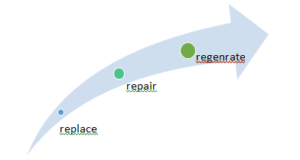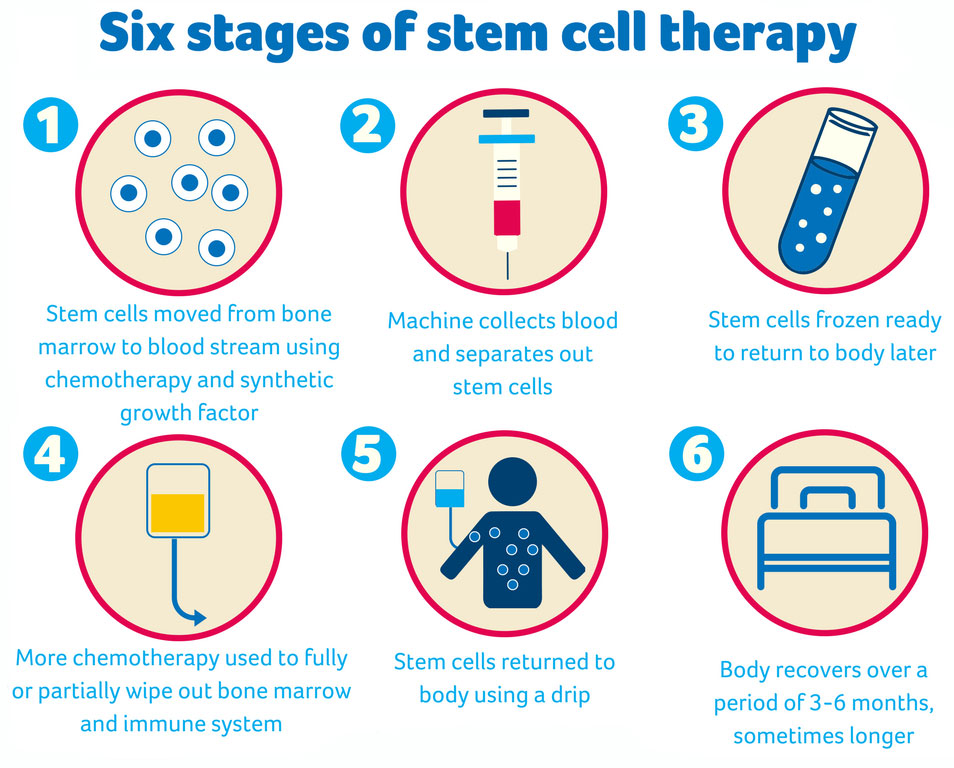Stem cells are the cells that give rise to newly formed, functionally specialised cells. New liver, nerve, and heart cells can be produced using stem cells. The growth factors IL-6, HGF, EGF, TNF-alpha, and others are present in these cells. For example, hematopoietic stem cell form all the cellular components as red blood cells, white blood cells, and platelets.
Why are stem cells of interest?
- To comprehend how diseases develop
- To swap out unhealthy cells for healthy ones.
- Examining novel medications for efficacy and safety
Only bone marrow-derived blood stem cells are used to treat blood cancer in India and around the world.
Who is eligible for stem cell therapy?
- Osteoarthritis of the shoulder, hip, and knee joints.
- A muscle tear.
Facet discomfort in the spine.
- Knee meniscal (cartilage) tear.
Pain in the sacroiliac joint
We have also learned that if stem cells are obtained from the hip bone, the process can be done quickly and painlessly. Sources of stem cells include embryonic, adult, and perinatal stem cells, but there is still much to learn about stem cell therapy.

Procedure-
- Bone marrow aspiration: This procedure involves taking a sample of the bone’s soft, sponge-like bone marrow, which serves as a source of blood cells. This is a source of adult stem cells, and under local anaesthesia, a bone marrow aspiration needle is used to retrieve them.
- Stem cell separation has begun and will take three to five hours. This process is carried out by accredited labs.
- Injecting stem cells: Using a spinal needle, the stem cells are injected intrathecally into the fluid surrounding the patient’s spine and brain.
Success rates for stem cell treatment in India rely on a variety of variables, including patient age, physical condition, disease severity, medical history, and medication. However, as research has advanced, stem cell therapy has shown good results in treating conditions like blood disorders, bone injuries, and more. Symptoms of a stem cell transplant include nausea and vomiting, infection, bleeding and transfusions, and graft failure. There are 50% to 80% success rate in treating cancer, thalassemia, aplastic anaemia, etc.
The science underlying the disease should be consistent with the science underlying the treatment, which means that only specific stem cells can be used for a given disease. For instance, if the disease is related to blood cancer, then blood stem cells will work for it, but if you have diabetes, then blood-forming blood cells won’t.
How long is stem cell therapy?
The effects of this treatment can sometimes endure a long time since it encourages healthier tissue growth, repairs damaged cells and lessens pain and inflammation.
Treatment costs vary by ailment, country, and hospital type in India. Costs might range from 4,997,359 to 21,48,991.
The cost of an autologous bone marrow transplant ranged from 14,34,000 to 16,50,000.
Costs for kidney transplants range from 3,34,000 to 4,87,000.
Parkinson’s disease affects 5,18,517 to 9,91,282 people.
Blood cancer: 8,60,000–20,000 cases.
Failure in stem cell therapy occurs when administered stem cells do not reach the bone marrow and do not multiply as they ought to. This is known as graft rejection.
